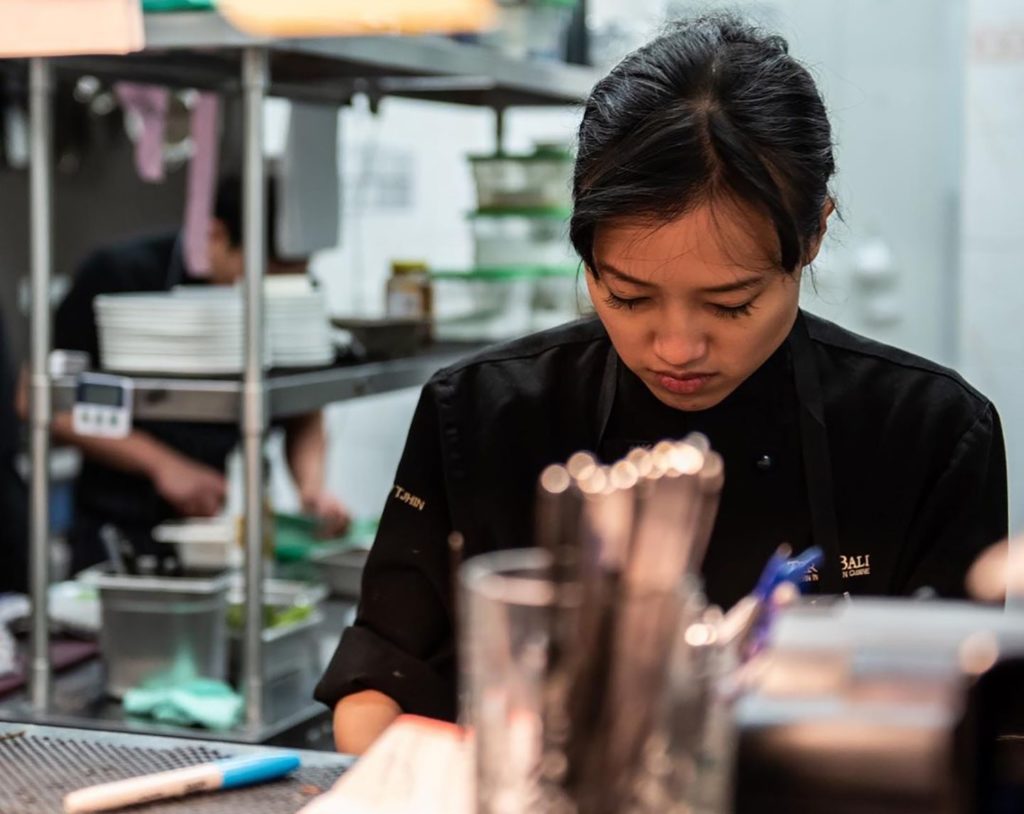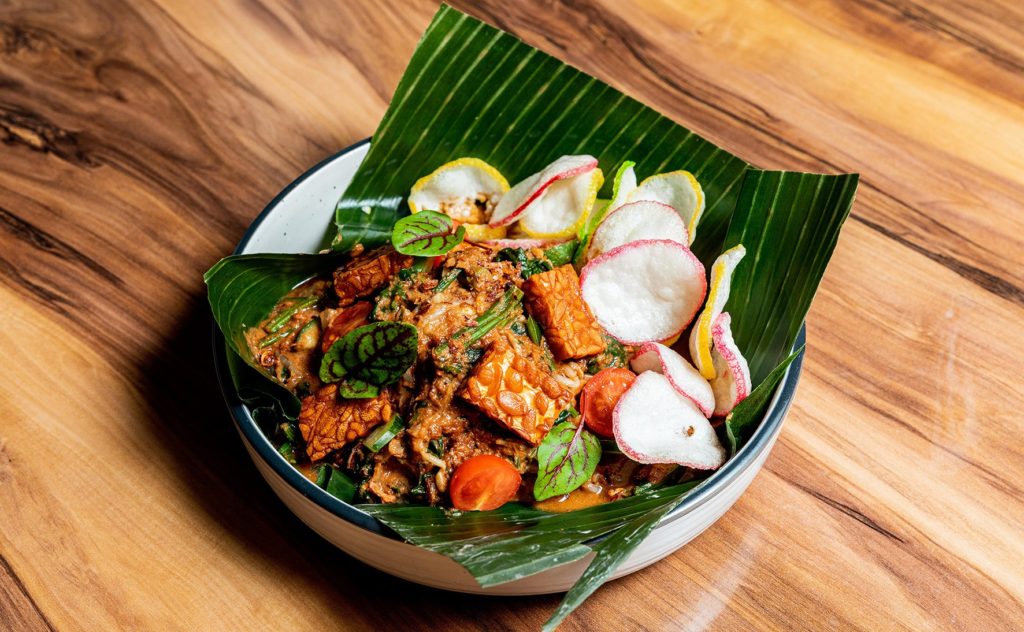Modern Indonesian by Natasya Soetantyo
Executive Chef and General Manager of Salt & Palm Natasya Soetantyo serves up traditionally inspired modern Indonesian food in Sydney’s inner-city suburb of Glebe. Salt & Palm offers diners a cross-regional menu that encompasses Balinese, Javanese and Chinese Indonesian cuisines. Soetantyo is inspired by the handwritten recipes passed on to her by her grandmother to create her signature sambals and sate marinade that top some of her most loved signature dishes. She’s shared with us two of her special recipes, a rich and fresh gado-gado salad and a traditional spicy sambal, dabu dabu.

Sharing the magic
Born in Jakarta and raised in Bali in a Chinese-Central Javanese family, Soetantyo was privy to the culinary techniques and recipes of generations of hospitality leaders. Influenced by both her grandmother and father’s home cooking, Soetantyo then went on to formally train at Le Cordon Bleu International Culinary School. Her career saw her working in venues such as Sama Sama (Singapore), Tok Tok (New Zealand) and Kota 88 (Singapore), alongside her father and brother as part of the family’s hospitality group, Blue Waves Food Empire.
Soetantyo then set her sights on Sydney to independently launch her own venue, Salt & Palm. Since opening in 2018, the modern Indonesian bar and diner has established itself as a staple of collective Indonesian culture and cuisine within Sydney’s inner west community.
At the helm of both the business and kitchen, Soetantyo builds culinary experiences that offer a cultural exploration of the different regions throughout Indonesia. And all dishes are inspired by her own warm feelings and memories of home. Soetantyo also explores and promotes cultural acceptance and cultural exchange through sharing food and recipes. An ardent culinary educator and equality advocate, Soetantyo brings people together to share their gastronomic passions through “the magic of Indonesian cuisine and hospitality”.

Gado-gado salad
Gado-gado salad originated in Jakarta. Sold by many street vendors, it’s basically a steamed vegetable salad doused with peanut sauce. Although normal peanuts are commonly used for the sauce, some vendors add a little bit of cashew to the peanut sauce to enhance the creaminess and the taste of the sauce. Soetantyo’s version uses an equal amount of peanuts and cashews to really enhance the mouthfeel taste of the sauce.
You’ll need:
For the cashew peanut sauce:
225g unsalted peanuts
225g unsalted raw cashews
450ml water
20g garlic, peeled and sliced
40g eschalots, peeled and sliced
20g chilli, long red variety, sliced
200g Indonesian palm sugar*, sliced
60ml tamarind paste*
2 kaffir lime leaves*, roughly shredded
Salt and pepper to taste
Vegetable oil for frying
For the salad:
You can experiment with any vegetables (raw and steamed). However, if you want to follow the traditional gado-gado, a traditional plate includes steamed cabbage, steamed snake beans, steamed potato, lightly blanched bean sprouts, cucumber, fried tempeh, fried tofu and boiled eggs. You must have crackers on the top of your gado-gado salad. Traditionally, we use bitternut crackers* or colourful garlic tapioca* crackers.
Method:
1. Preheat oven to 180°C. Lightly coat both peanuts and cashews with oil. Roast nuts in the oven until light golden-brown, about 10 minutes. Do not roast them until they’re too brown as it may add a slightly burnt taste to the sauce. After roasting, set aside to cool.
2. Heat vegetable oil in a saucepan over medium heat. Sauté garlic, chilli and eschalots until soft and fragrant. Add shredded kaffir lime leaves and sauté until fragrant.
3. Add palm sugar, tamarind paste and water to a saucepan. Cook until the flavours are thoroughly combined and the palm sugar is fully melted. Set aside and let cool.
4. When both the nuts and the liquid are cooled down, get ready with a food processor. First, blend the nuts until they become a fine crumb. Then gradually add the liquid to the food processor and blend until very fine and smooth. It generally takes about 10-12 minutes to fully release the oils from the nuts. Add salt and black pepper to taste.
*You’ll find all these ingredients in Asian grocers.

Sambal dabu-dabu
Indonesia is famous for its many varieties of sambal, a spicy chilli condiment. Different islands in Indonesia have different types of sambals; they all differ vastly in taste and texture. This sambal is from Manado, the capital city of North Sulawesi. It’s notoriously spicy and is usually paired with grilled fish, but also pairs well with fried foods.
You’ll need:
120g green tomato*, diced
120g red tomato, diced
40g eschalots, sliced
20g chilli, long red variety, sliced
3 pieces bird’s eye chilli, or to taste (more if you want real Indonesian spicy)
1 lime
1 tsp salt
2 tsp sugar
2 tbsp lemon basil*
Method:
1. Combine tomatoes, chilli and eschalots into a mixing bowl.
2. Cut lime in half and squeeze the juice into the tomato, eschalot and chilli mixture. Add salt and sugar and combine everything.
3. Chop basil finely and add to the mixture. Combine everything and adjust to taste.
*If you can’t find green tomatoes, you can substitute with regular red tomatoes. You can find lemon basil in Asian grocers, but if it’s unavailable, you can substitute Thai basil.









